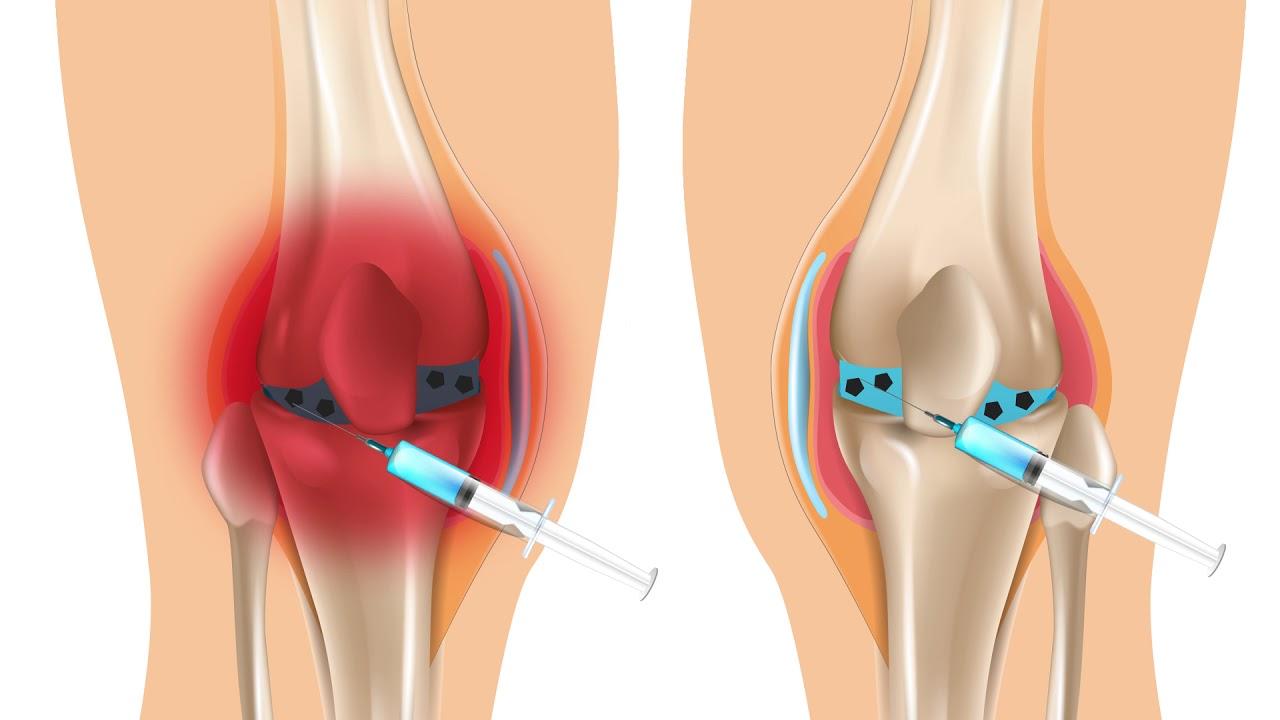Viscosupplementation, also known as intra-articular hyaluronic acid (HA) injection therapy, involves injecting HA derivatives or synthetic lubricants into the knee joint of patients suffering from osteoarthritis (OA). The goal is to supplement the viscous lubricating fluid (synovial fluid) that normally protects the cartilage and reduces friction in the joint. As OA progresses, the synovial fluid often loses its viscosity and lubricating properties. Viscosupplementation aims to replenish this fluid and restore its shock-absorbing and friction-reducing qualities.
How Canada Viscosupplementation Works
In a healthy joint, HA molecules in the synovial fluid are composed of long chains that allow the fluid to act as a lubricant and cushion. In OA, chronic inflammation causes the body to produce shorter-chain, less viscous HA molecules. Viscosupplementation products contain HA, either natural or synthetic, designed to match the high molecular weight of normal synovial fluid. After injection into the knee joint space, the HA derivative acts as a synovial fluid substitute or supplement. It restores viscosity and elasticity to cushion bone rubbing against bone and reduce pain from movement. The lubricating gel lubricates the joint surfaces and absorbs shock from activity.
Products And Treatment Protocols
Health Canada has approved several HA products for viscosupplementation, including Supartz, Hyalgan, Orthovisc, Synvisc, and Euflexxa. Treatment usually involves a series of 3-5 weekly injections, though some single-injection products exist. The goal is to replenish the synovial fluid and give it time to act as a lubricant and shock absorber before degrading. Treatment courses can be repeated if symptoms worsen again after 6 months or more. Often a steroid injection is given in conjunction to reduce inflammation during treatment.
Effectiveness And Durability
According to the American Academy of Orthopaedic Surgeons, viscosupplementation provides mild-to-moderate, temporary pain relief for knee OA symptoms like stiffness, swelling, and impaired movement. Studies show benefits can last 3-6 months on average after a standard treatment series is completed. Viscosupplementation is not a cure and does not modify the underlying disease process. Symptoms generally return once the HA wears off. Some research suggests it may be most effective for patients with mild-to-moderate OA. Repetition of the treatment may help sustain benefits over multiple years.
Risks And Considerations
Viscosupplementation is generally very safe when administered by a qualified physician. Minor side effects can include brief pain, swelling or tenderness at the injection site. Serious adverse effects are rare. As with any intra-articular injection, there is a small risk of infection. People with knee joint inflammation from other causes may not benefit. Coverage varies depending on private/public plans. The treatment is less expensive than surgery but is not usually covered under standard public plans in Canada. It remains an important non-surgical option to consider.
Patient Selection And Treatment Planning
A careful patient evaluation helps determine if viscosupplementation is an appropriate treatment choice. Key considerations include the degree of joint damage on imaging, level of pain/dysfunction impacts activities, previous conservative treatment failures, and realistic expectations about treatment goals. Overall health, risk factors, and lifestyle are also reviewed. Management of weight, activity modifications, bracing, and other nonsurgical options should be discussed as part of an overall treatment plan. Viscosupplementation provides the most benefits when used appropriately as just one component of a comprehensive OA treatment approach.
Addressing Concerns And Managing Expectations
While research supports viscosupplementation, some concerns exist around its long-term effectiveness and cost-effectiveness compared to other therapies. One meta-analysis found no significant difference in pain relief compared to placebo beyond 6 months. Critics argue its benefits are minimal and temporary. Proponents counter that even temporary pain relief can have positive effects on function and quality of life when OA symptoms are interfering significantly. Honest communication between physicians and patients helps establish realistic expectations based on the latest evidence and individual circumstances. Viscosupplementation delivers the most value when patients understand it as a supplemental treatment rather than a cure. With proper patient selection and management of expectations, it delivers meaningful benefits for suitable candidates.
Future Research Directions
Further research continues to explore ways to optimize viscosupplementation treatment outcomes. This includes assessing different HA product characteristics, injection techniques, multi-session protocols, and combination with other therapies. Studies are also investigating use of ultrasound or steroid guidance to improve delivery to target areas within the joint.
Elucidating which patient factors most strongly predict response could help refine patient selection criteria going forward. Larger, higher quality randomized controlled trials are still needed to establish comparative effectiveness versus other options. Overall, viscosupplementation remains an important non-surgical approach for symptomatic knee OA that warrants further research to maximize clinical usefulness for patients.
Get more insights on this topic: https://fortunetelleroracle.com/health-care/canada-viscosupplementation---viscosupplementation-for-osteoarthritis-in-canada-886749
About Author:
Ravina Pandya, Content Writer, has a strong foothold in the market research industry. She specializes in writing well-researched articles from different industries, including food and beverages, information and technology, healthcare, chemical and materials, etc.(https://www.linkedin.com/in/ravina-pandya-1a3984191)

